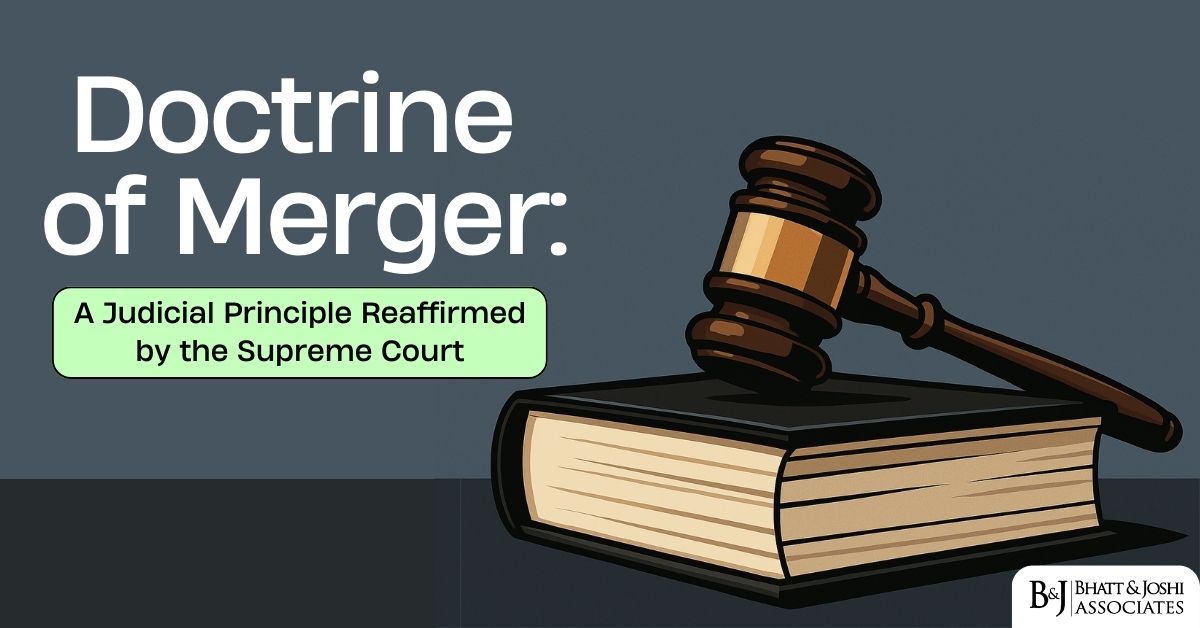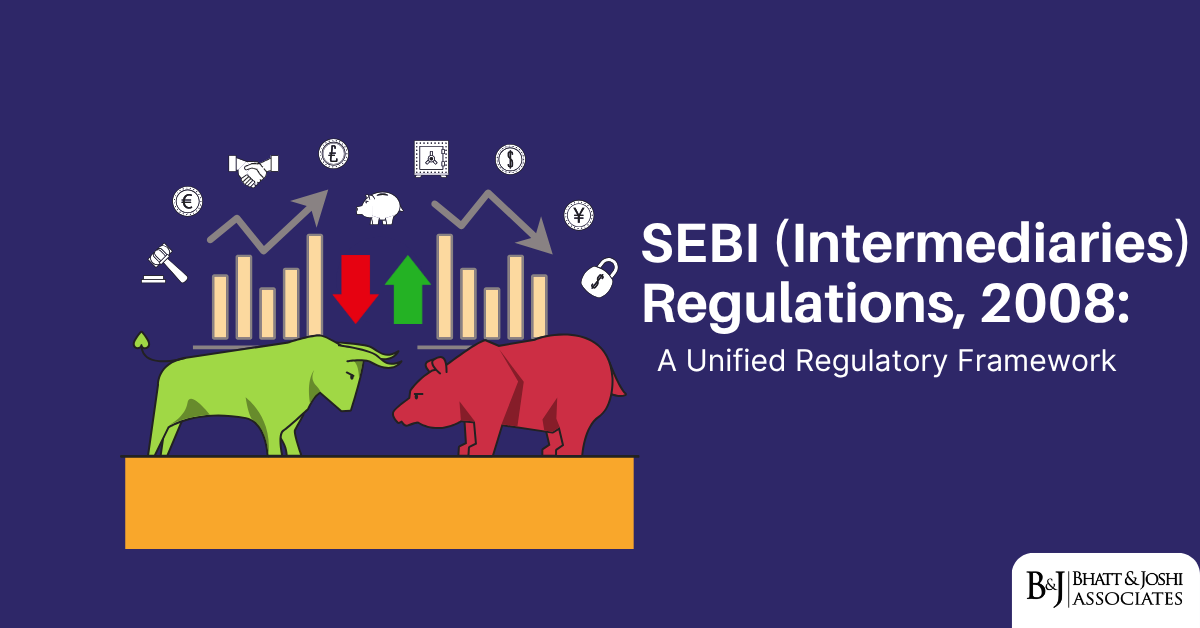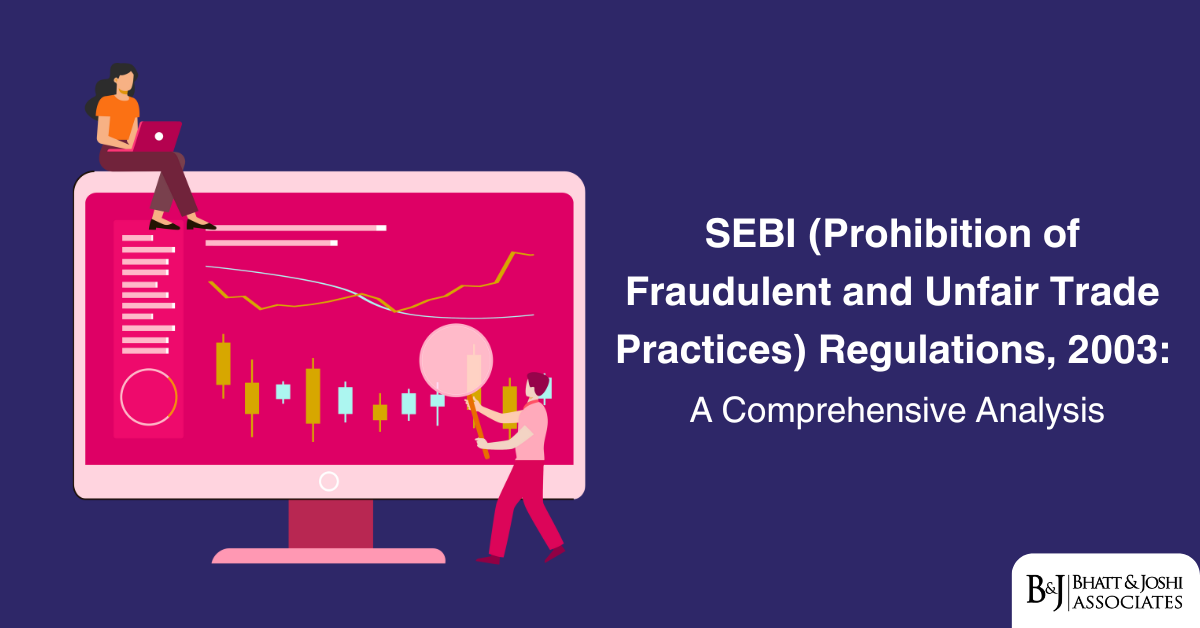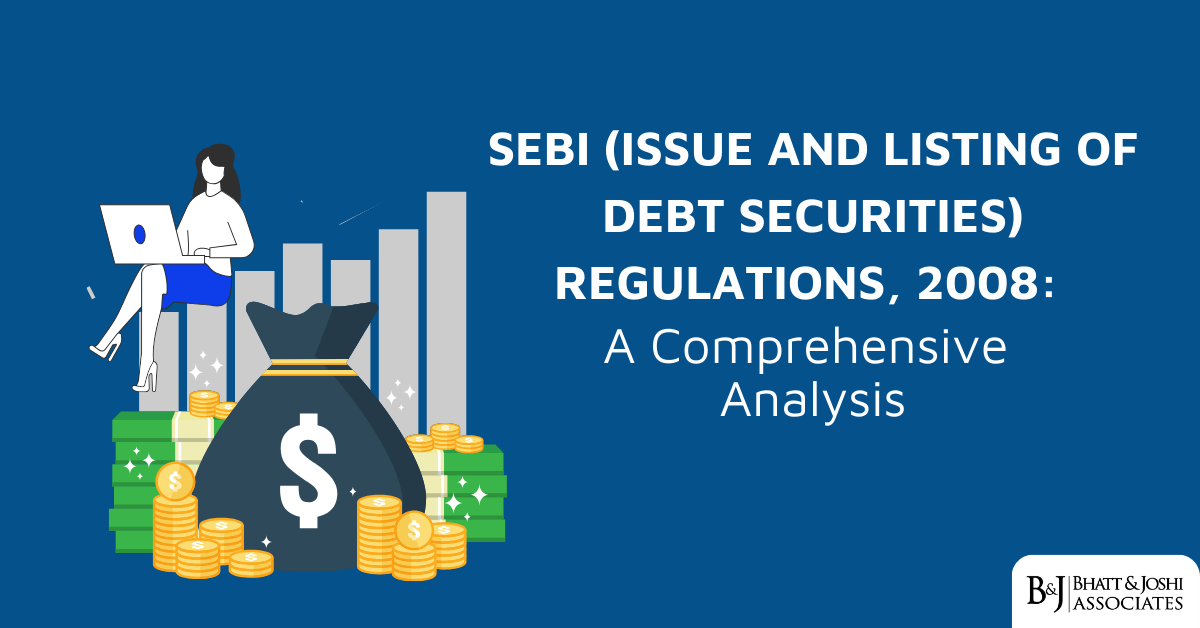By Adv. Aaditya Bhatt

Introduction
The doctrine of merger stands as a fundamental principle in India’s judicial hierarchy, recently receiving renewed emphasis from the Supreme Court in January 2025. This principle ensures judicial finality by establishing that when a higher court adjudicates a matter previously decided by a lower court, only one decree ultimately governs. The landmark case of Kunhayammed v. State of Kerala (2000) remains the definitive exposition of this doctrine, clarifying its application and limitations. The recent Supreme Court ruling has further reinforced the importance of this doctrine in maintaining judicial discipline and preventing conflicting judgments.
The Doctrine of Merger: Concept and Foundation
The Doctrine of Merger is a common law principle rooted in the idea of maintaining the hierarchical structure of courts and tribunals. At its core, the doctrine posits that once a superior court disposes of a case, the decision or decree of the lower court merges with that of the superior court, regardless of whether the higher court confirms, modifies, or reverses the original decision[3]. This principle ensures that there cannot be more than one operative decree or order governing the same subject matter at a given point in time.
The doctrine serves multiple essential purposes in the judicial system:
- It maintains judicial hierarchy by respecting the superior authority of higher courts
- It prevents conflicting decisions on the same matter
- It ensures finality in litigation
- It promotes judicial economy by avoiding multiple proceedings on identical issues
The rationale behind this principle was aptly described by the Supreme Court when it noted that there cannot be, at the same time, more than one operative order governing the same subject matter[4]. This simple yet profound reasoning forms the foundation of the doctrine’s application across various judicial contexts.
Evolution Through Judicial Pronouncements
The doctrine of merger has evolved through a series of landmark judgments. Early discussions can be traced to the Bombay High Court in CIT v. Tejaji Farasram Kharawalla. Subsequently, the Supreme Court in several cases including Gojer Bros. (P) Ltd. v. Ratan Lal Singh (1974) established that there could be no distinction in terms of application between an appellate judgment simply dismissing an appeal and one modifying or reversing the lower court’s decree.
The doctrine continued to develop through various judicial pronouncements, with each case refining its scope and application in different contexts. These judgments collectively established the doctrine as an essential component of India’s judicial discipline.
Kunhayammed v. State of Kerala (2000): The Landmark Judgment
The Supreme Court’s decision in Kunhayammed v. State of Kerala (2000) stands as the most comprehensive judicial examination of the doctrine of merger. This landmark judgment explored the doctrine’s application, particularly in relation to special leave petitions (SLPs) and the right to file for review of court orders.
In this seminal case, the Supreme Court articulated:
“The logic underlying the doctrine of merger is that there cannot be more than one decree or operative orders governing the same subject-matter at a given point of time. When a decree or order passed by an inferior court, tribunal or authority was subjected to a remedy available under the law before a superior forum then, though the decree or order under challenge continues to be effective and binding, nevertheless its finality is put in jeopardy. Once the superior court has disposed of the lis before it either way — whether the decree or order under appeal is set aside or modified or simply confirmed, it is the decree or order of the superior court, tribunal or authority which is the final, binding and operative decree or order wherein merges the decree or order passed by the court, tribunal or the authority below.”
The Court established several crucial principles in this judgment:
- The doctrine is not of universal or unlimited application
- Its applicability depends on the nature of jurisdiction exercised by the superior forum
- The content or subject matter of challenge is determinative of whether merger applies
- The superior jurisdiction should be capable of reversing, modifying, or affirming the order put in issue before it
Special Leave Petitions and the Doctrine
A particularly significant aspect of the Kunhayammed judgment was its clarification regarding the application of the doctrine to Special Leave Petitions (SLPs). The Court drew an important distinction:
“Under Article 136 of the Constitution the Supreme Court may reverse, modify or affirm the judgment-decree or order appealed against while exercising its appellate jurisdiction and not while exercising the discretionary jurisdiction disposing of petition for special leave to appeal. The doctrine of merger can therefore be applied to the former and not to the latter.”
This means that when an SLP is merely dismissed without granting leave to appeal, the doctrine of merger does not apply. However, once leave to appeal is granted and the Supreme Court exercises its appellate jurisdiction, the resulting order would attract the doctrine of merger.
Key Elements and Application of the Doctrine of Merger
For the doctrine of merger to apply, certain key conditions must be met:
- There must be a decision of a subordinate court or forum
- A right of appeal or revision must exist against this decision
- This right must be duly exercised
- The superior forum must modify, reverse, or affirm the decision
- As a consequence, the lower court’s decision merges with that of the superior forum
The doctrine finds application across various judicial contexts, including civil, criminal, and administrative matters. It applies whenever a higher court or tribunal exercises its appellate or revisional jurisdiction over a lower court’s decision.
Practical Application and Legal Effect
The practical effect of the doctrine is illustrated in recent cases. In January 2025, the Supreme Court explained the doctrine’s application in a case involving specific performance of an agreement to sell. The trial court had directed the plaintiff to deposit the balance sale consideration within 20 days, but when the matter reached the Punjab & Haryana High Court on appeal, the High Court allowed the appeal without specifying a time limit for the deposit.
When the case reached the Supreme Court, the question arose whether the trial court’s 20-day timeline would still apply. The Court ruled that since the High Court’s order had not specified a timeline, and because the trial court’s order had merged with the High Court’s decision, the 20-day period from the trial court could not be revived. This clearly demonstrates how the doctrine functions in practice to ensure that only one order remains operative.
Exceptions to the Doctrine of Merger
While the doctrine of merger is widely applicable, it is not absolute. Several important exceptions have been recognized:
- The doctrine does not apply to dismissal of Special Leave Petitions without reasons, as the Supreme Court does not express any opinion on the merits in such cases.
- The extraordinary powers of the Supreme Court under Article 142 to do complete justice remain an exception to the doctrine of merger.
- The doctrine’s application depends on the nature of jurisdiction exercised by the superior forum and the content of the challenge[2].
These exceptions ensure that the doctrine remains flexible enough to serve justice while maintaining its core purpose of preventing multiple operative orders on the same subject matter.
Recent Judicial Reaffirmation (2025)
In January 2025, a Supreme Court bench comprising Justice JB Pardiwala and Justice R Mahadevan reaffirmed and clarified the doctrine of merger. The Court emphasized that there cannot be more than one decree or operative order governing the same subject matter at any given time.
The Court stated: “When a superior court disposes of a case, whether by setting aside, modifying, or confirming the lower court’s decree, the superior court’s order becomes the final, binding, and operative decree, merging the lower court’s decision into it.”
This recent reaffirmation underscores the continuing relevance and importance of the doctrine in the Indian judicial system, demonstrating how fundamental principles established in cases like Kunhayammed continue to shape judicial practice decades later.
Significance and Implications for Legal Practice
The doctrine of merger has several significant implications for legal practice:
- It provides clarity on which judgment is enforceable when multiple courts have ruled on the same matter.
- It establishes judicial finality, preventing parties from seeking to enforce conflicting judgments from different courts.
- It upholds the hierarchical structure of the judicial system by ensuring that higher courts’ decisions take precedence.
- It guides legal practitioners on the appropriate forum for challenging judicial decisions, based on whether merger has occurred.
The doctrine therefore serves as a crucial organizing principle in the complex landscape of judicial appeals and revisions, providing certainty and consistency to litigants and legal practitioners alike.
Conclusion
The Doctrine of Merger stands as a cornerstone of India’s judicial architecture, ensuring clarity, consistency, and finality in legal proceedings. The landmark Kunhayammed judgment established its foundational principles, while recent Supreme Court pronouncements have reaffirmed its continued relevance and application.
The doctrine elegantly resolves what could otherwise be a chaotic situation of multiple operative orders governing the same subject matter. By establishing that a lower court’s decision merges with that of a higher court when reviewed, the doctrine maintains judicial discipline and hierarchy while preventing conflicting judgments.
As India’s legal system continues to evolve, the Doctrine of Merger remains an essential tool for achieving judicial coherence and upholding the rule of law, demonstrating how fundamental principles can adapt to new contexts while maintaining their essential purpose of delivering clear and consistent justice.
References
- Doctrine of Merger – Drishti Judiciary
- Analyse Doctrine of Merger of Orders – MCO Legals
- Doctrine of Merger – CivilsDaily
- The Doctrine of Merger | SCC Times
- Kunhayammed and others vs. State of Kerala and another (2000)
- Doctrine of Merger Explained: Supreme Court Rules on Binding Nature of Higher Court Orders – Legal Wires













